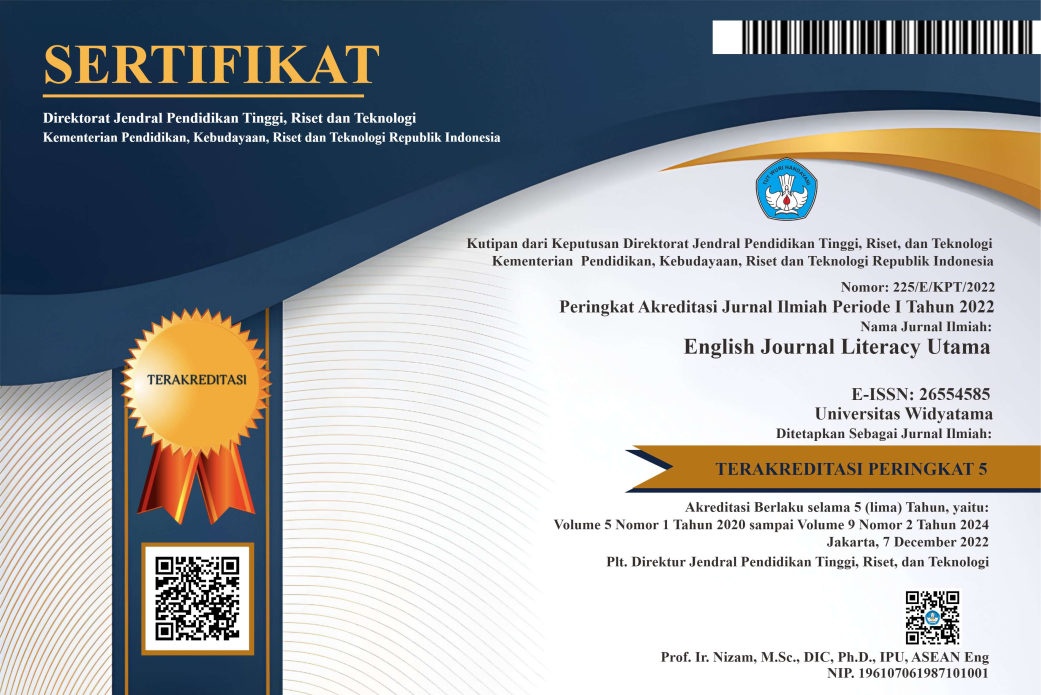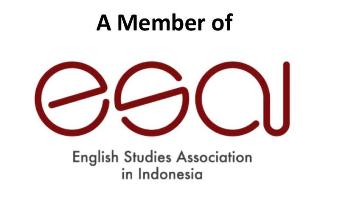PERSUASIVE TECHNIQUES IN DIGITAL POSTER SLOGANS OF ENVIRONMENT AND ANIMAL CONSERVATION: A SEMANTIC STUDY
DOI:
https://doi.org/10.33197/ejlutama.v8i2.263Keywords:
Semantics, persuasive technique, types of connotative meaning, slogansAbstract
This research aims to identify and analyze the persuasive technique and type of connotative meaning in slogans about animal and environmental digital posters retrieved through the Pinterest Platform. This research uses descriptive qualitative methods. As stated by Brett Lamb (2019) in Persuasive Language Teaching Resources, “Writers can use numerous strategies to convince you of their point-of-view.” Based on Brett Lamb's theory, there are 25 persuasive techniques. Besides that, this research focuses on identifying and analyzing the various types of persuasive techniques that appear in slogans. In addition, the study analyzes the types of connotative meaning based on Parera (2004), “Connotative, which can be categorized into two types: positive and negative connotations.” Through collecting, categorizing, classifying, and analyzing the data based on descriptive qualitative methods. The research found 12 persuasive techniques shown in 40 data, including, alliteration, appeal, assonance, emotive language, evidence, hyperbole, inclusive language, metaphor, pun, rhetorical question, repetition, and simile. The data are dominated by the repetition technique because it helps to strengthen memory and influence the perception of the message consistently. On the contrary, a negative connotation is a type of connotative meaning that is mostly used in the slogan. The study found that negative connotations can be more effective in persuading because negative connotations can give a stronger emotional reaction compared to positive ones
References
Adelina Tarigan, M. P., & Simatupang, E. C. (n.d.). Figurative Language in Little Mix Album Glory Days: Semantics Study. https://doi.org/10.33258/birci.v5i3.5879
Azzahra, I., & Heryono, H. (2023). Persuasive Language of Advertisement in People Magazine: A Semantic Study. In Jurnal Sinestesia (Vol. 13, Issue 2). https://sinestesia.pustaka.my.id/journal/article/view/409
Costantia, H. (2022). Penggunaan Eufemisme Dan Disfemisme Dalam Film “Cruella” Kajian Semantik. Gunawan, R., & Simatupang, E. C. (n.d.). Semiotics in Teh Botol Sosro’s Advertisement Ramadan Edition.
https://doi.org/10.33258/birci.v5i3.5906
Ilham Fikriansyah. (2023, December 30). Penelitian Deskritptif: Pengertian, Tujuan, Kriteria, hingga Ciri - Cirinya. Detikedu. https://www.detik.com/edu/detikpedia/d-7116050/penelitian-deskriptif- pengertian-tujuan-kriteria-hingga-ciri-cirinya
Jayanti, D., & Afrilesa, R. J. (2019). A Connotative Meaning Analysis of Journalistic Language on Tribunnews online.com(Politic Issues). http://ojs.umb-bungo.ac.id/index.php/Krinok/index
Jessica Novia, & Serafica Gischa. (2022, March 14). Pentingnya Komunikasi Persuasif dalam Sebuah Kampanye. Kompas.Com. https://www.kompas.com/skola/read/2022/03/14/190000169/pentingnya-komunikasi- persuasif-dalam-sebuah-kampanye
John. I Saeed. (2015). Semantics (4th ed.). Wiley . https://books.google.co.id/books/about/Semantics.html?hl=id&id=SYhxBgAAQBAJ&redir_esc=y
Kubro, R. A., & Suyitno, I. (2019). PERSUASIVE LANGUAGE IN ADVERTISEMENT DISCOURSES (BUSINESS
ADVERTORIAL ANALYSIS). In Journal of Intensive Studies on Language, Literature, Art, and Culture ISLLAC : Journal of Intensive Studies on Language, Literature, Art, and Culture (Vol. 3). http://journal2.um.ac.id/index.php/jisllac
Downloads
Published
Issue
Section
License
Copyright (c) 2024 Rifa Aqmarina, Meita Lukitawa Sujatna

This work is licensed under a Creative Commons Attribution-NonCommercial-ShareAlike 4.0 International License.
Creative Commons Attribution-ShareAlike 4.0 International License















